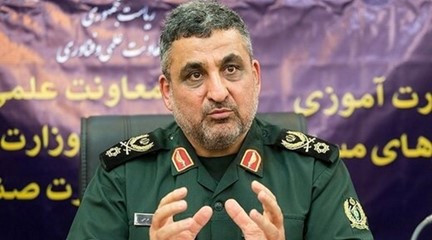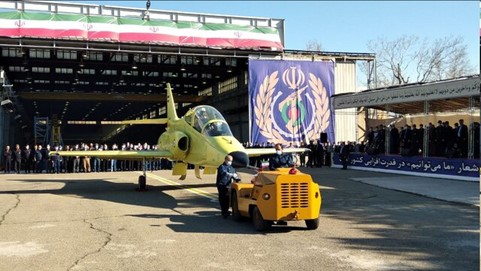
Iran’s Yasin training jet unveiled on 11 March 2023.
“The Air Force has had a very good year in the field of defense diplomacy.”
Iran’s Air Force traditionally lags behind its other military branches, but Iranian authorities are seeking to close the gap.[i] With the end of many sanctions and growing confidence, the Iranian Air Force is engaging in “defense diplomacy” with friendly regimes to improve pilot training and overall capability. While the excerpted article from a pro-regime website Alef.ir does not mention specific partners, there are few possibilities. Iran collaborates with the so-called “Axis of Resistance” consisting of pro-Iranian regimes or proxy groups in Lebanon, Syria, Iraq, and Yemen. Iranian soldiers have participated in exercises in Russia and former Soviet states in Central Asia, many of which might also open doors to Iranian pilot training.[ii] Any willingness by other countries to welcome Iranian pilots for training courses or exchanges could enhance Iranian familiarity with aircraft and platforms it might encounter in conflict and enable Iranian Air Force personnel to surreptitiously learn about potential new technologies. For example, the Iraqi Air Force flies U.S.-produced F-16s that are a generation more advanced than jet fighters in Iran’s arsenal. Exchanges with Russia or China could foreshadow investment in their military markets. Air Force Commander Hamid Vahedi’s comments about “maintenance and repair of parts and airplanes” suggest that the Iranian Air Force might use new partnerships to acquire spare parts or upgrade avionics. While Iranian leaders often embraced the rhetoric of self-sufficiency to suggest isolation and sanctions did not hurt them, the scramble for new relationships suggests the Iranian Air Force seeks to emerge from its isolation and play a greater role in Iran’s regional military calculations.
Sources:
“بآمادگی نیروی هوایی ارتش برای انجام رزمایش با کشورهای همسو”(The Air Force is Prepared to Conduct Exercises with Allied Countries),” Alef.ir (website affiliated with conservative populist politician Ahmad Tavakkoli), 15 February 2024. https://www.alef.ir/news/4021126042.html
Brigadier General Hamid Vahedi, commander of Iranian Army’s Air Force, in a meeting of foreign military attaches in Tehran [coinciding with the 45th anniversary of the Islamic Revolution], said, “The Air Force has always been effective and decisive in every field that it has entered. The commander of the Army Air Force spoke of [recent achievements, including] “production and utilization of Yasin [RG1] training light fighter bomber and purchase and acquisition of the Fajr-3 training aircraft of the Pak-130 training aircraft; production and operation of a variety of drones including Kaman-12 [RG2] and Saman-22; performing long-range operations outside Iran’s flight information region (FIR); manufacturing of various simulators, laser-guided bombs, anti-radar rockets, as well as the establishment of new science centers including those focused on artificial intelligence…. He added, “The Air Force has had a very good year in the field of defense diplomacy, with a number of positive steps and productive instances of delegation exchanges, meetings and visits, training courses, and the dispatch of observers to exercises in other countries….” He added, “The Islamic Republic of Iran [Army] Air Force is prepared to cooperate and interact as much as possible with aligned countries in various fields, including carrying out joint exercises, educational cooperation, especially the exchange of students and professors between aviation universities in various fields, cooperation in the affairs of maintenance and repair of parts and airplanes.”
Notes:
[i] For a moment the Islamic Revolutionary Guard Corps sought to develop a strike fighter, but it was unable to compete technologically with the U.S.-produced F-35 Joint Strike Fighter and upgraded F-16s, Russia’s Sukhoi-35s, or their Chinese corollaries. Instead, Iran sought to jerry-rig and cannibalize its existing fleet to keep the dwindling number of its 1970s-era aircraft viable. For discussion of the state of the Iranian Air Force see: Michael Rubin, “Iranian F-14 Crash Highlights Iran’s Need for New Fighter Contract,” OE Watch, 08-2022. https://fmso.tradoc.army.mil/2022/iranian-f-14-crash-highlights-irans-need-for-new-fighter-contract/
[ii] For earlier Iranian participation in Russian war games, see: Michael Rubin, “Iran: Revolutionary Guards Take Part in Russian Military Games,” OE Watch, September 2016. https://community.apan.org/wg/tradoc-g2/fmso/m/oe-watch-past-issues/195247/download; For Iranian participation in Chinese war games, see: Michael Rubin, “Iran: IRGC Training in China,” OE Watch, September 2017. https://community.apan.org/wg/tradoc-g2/fmso/m/oe-watch-past-issues/205061/download
Image Information:
Image: Iran’s Yasin training jet unveiled on 11 March 2023.
Source: https://cdn.isna.ir/d/2023/03/11/3/62547091.jpg?ts=1678512083735
Attribution: Iranian Students’ News Agency

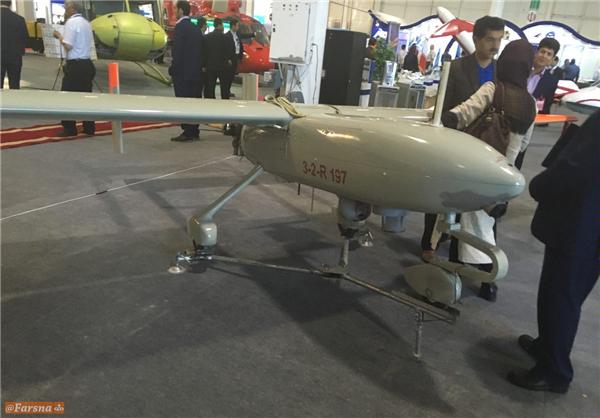
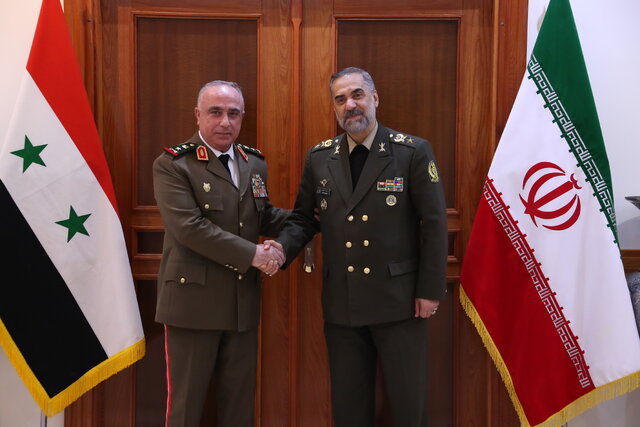
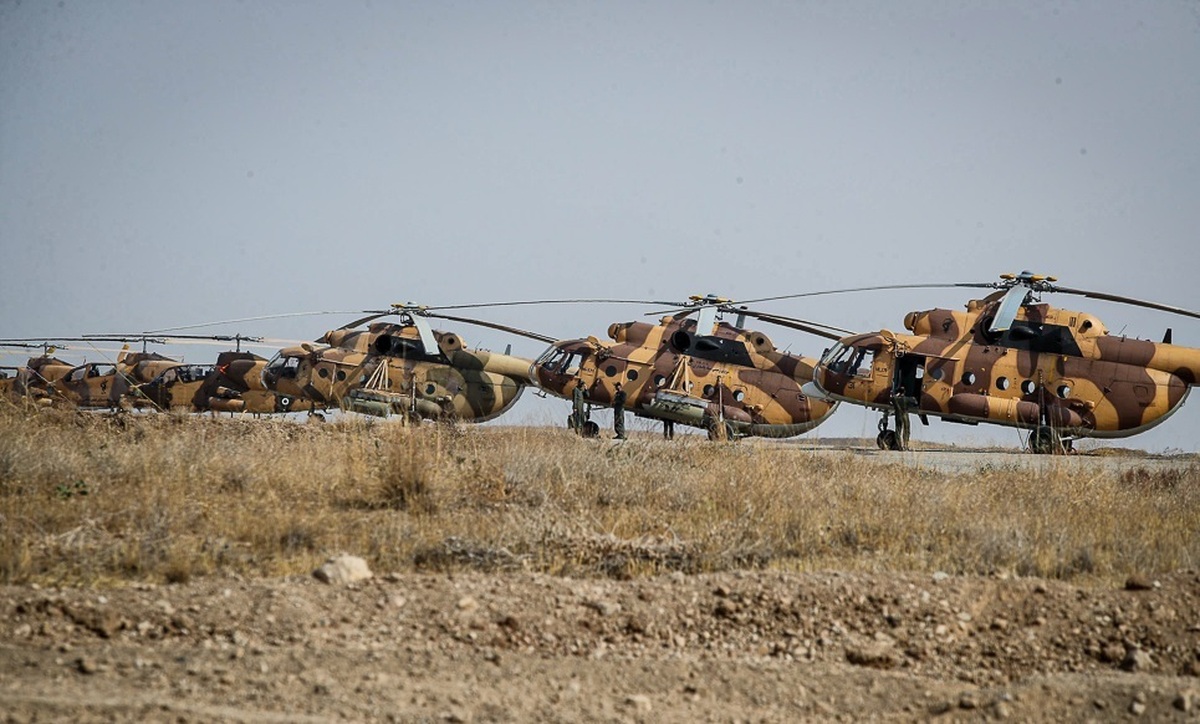
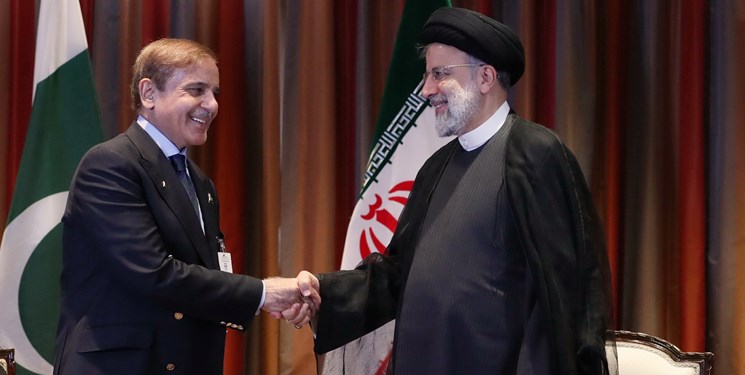
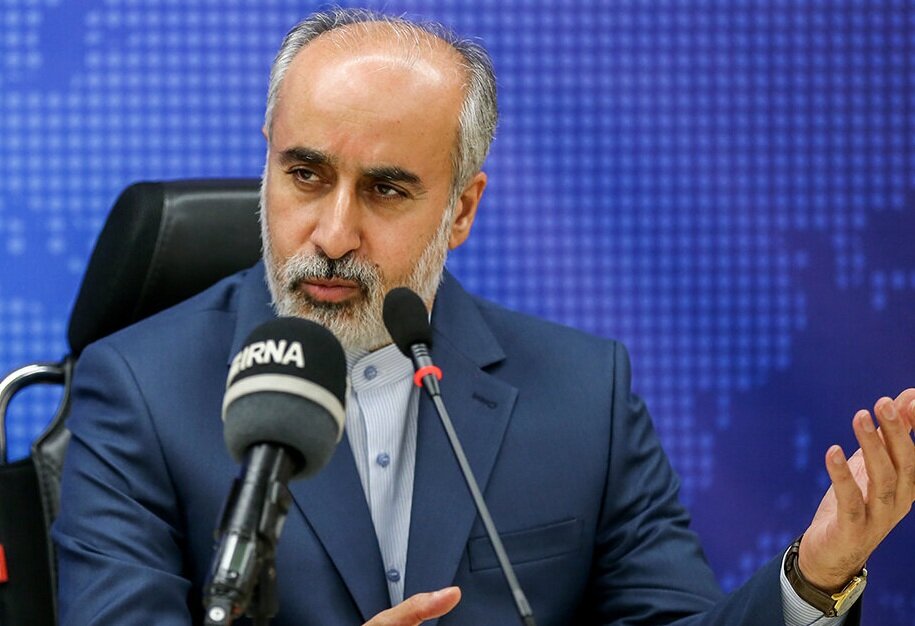

.jpeg)
